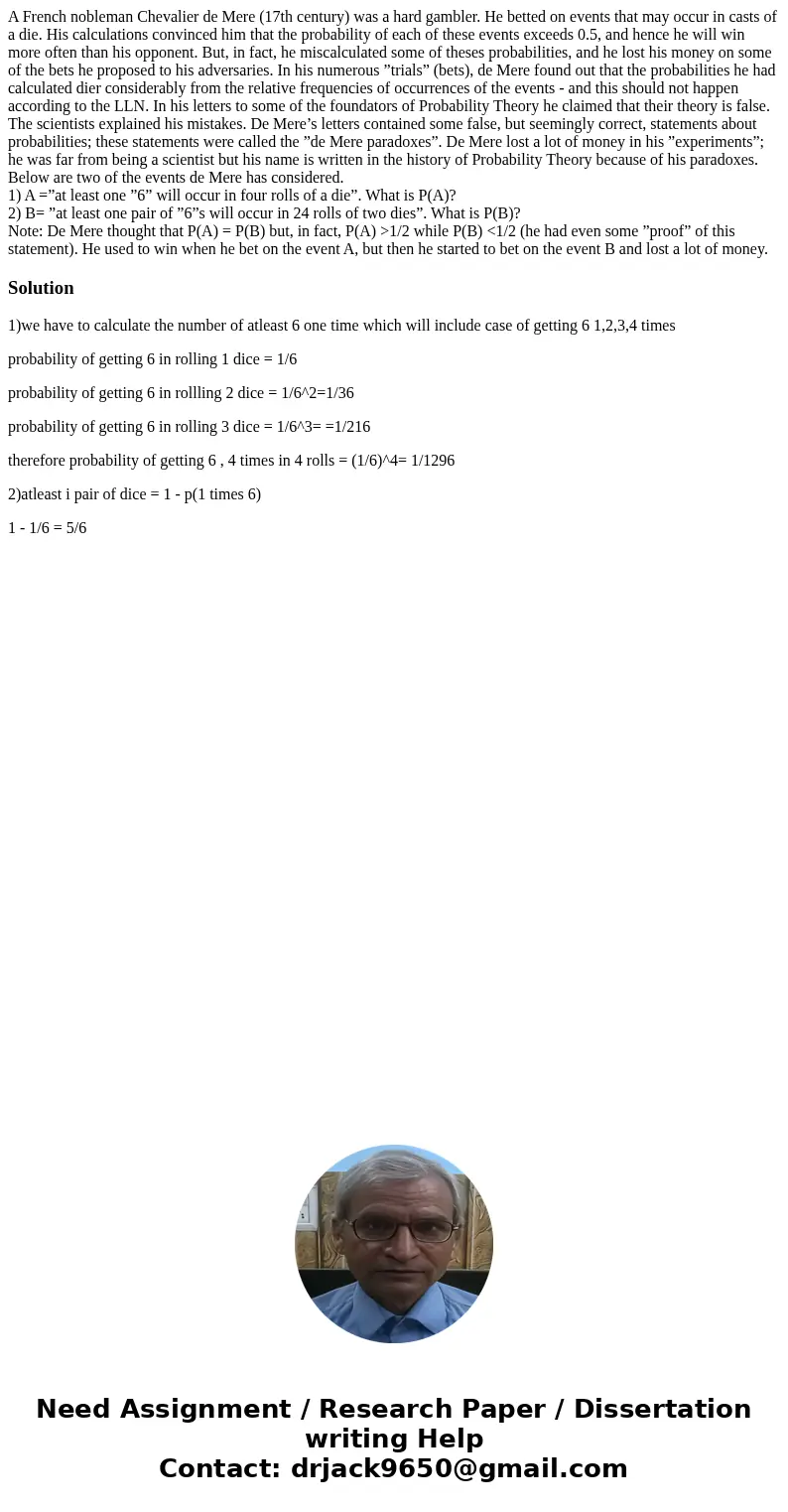A French nobleman Chevalier de Mere 17th century was a hard
A French nobleman Chevalier de Mere (17th century) was a hard gambler. He betted on events that may occur in casts of a die. His calculations convinced him that the probability of each of these events exceeds 0.5, and hence he will win more often than his opponent. But, in fact, he miscalculated some of theses probabilities, and he lost his money on some of the bets he proposed to his adversaries. In his numerous ”trials” (bets), de Mere found out that the probabilities he had calculated dier considerably from the relative frequencies of occurrences of the events - and this should not happen according to the LLN. In his letters to some of the foundators of Probability Theory he claimed that their theory is false. The scientists explained his mistakes. De Mere’s letters contained some false, but seemingly correct, statements about probabilities; these statements were called the ”de Mere paradoxes”. De Mere lost a lot of money in his ”experiments”; he was far from being a scientist but his name is written in the history of Probability Theory because of his paradoxes. Below are two of the events de Mere has considered.
1) A =”at least one ”6” will occur in four rolls of a die”. What is P(A)?
2) B= ”at least one pair of ”6”s will occur in 24 rolls of two dies”. What is P(B)?
Note: De Mere thought that P(A) = P(B) but, in fact, P(A) >1/2 while P(B) <1/2 (he had even some ”proof” of this statement). He used to win when he bet on the event A, but then he started to bet on the event B and lost a lot of money.
Solution
1)we have to calculate the number of atleast 6 one time which will include case of getting 6 1,2,3,4 times
probability of getting 6 in rolling 1 dice = 1/6
probability of getting 6 in rollling 2 dice = 1/6^2=1/36
probability of getting 6 in rolling 3 dice = 1/6^3= =1/216
therefore probability of getting 6 , 4 times in 4 rolls = (1/6)^4= 1/1296
2)atleast i pair of dice = 1 - p(1 times 6)
1 - 1/6 = 5/6

 Homework Sourse
Homework Sourse